
The story of how a shy radio astronomer from the Eastern Cape came to be a central character in building of one of the world’s most sensitive scientific instruments involves a series of unlikely events, a startling amount of beer and popcorn, and a team fuelled by the stubborn conviction that South Africa could pull it off.
In the year 2000, South Africa’s prowess in the field of radio astronomy was on the verge of flickering out.
The country boasted a total of five radio astronomers and there was talk of closing down the only institution that offered courses on it – Rhodes 老虎机游戏_pt老虎机-平台*官网’s Department of Physics and Electronics.
A solitary radio telescope was still operating: Hartebeesthoek Radio Observatory (HartRAO) near Johannesburg.
Fast-forward two decades, and everything has changed. Radio astronomy studies are flourishing in South Africa with more than 100 PhD-qualified researchers collaborating across all major universities.
Leading scientists from all over the world are conducting research using the data pouring from the 64 dishes of the South African MeerKAT radio telescope situated in the stillness of the Great Karoo. MeerKAT is the precursor of the international Square Kilometre Array (SKA) telescope, which was given the official go-ahead at the end of June.
This will see the building of another 133 dishes spread along curved spiral arms, stretching across hundreds of kilometres.
The SKA and MeerKAT intercept radio waves generated by the birth and death of stars, detect the mysterious and powerful force known as dark energy, and record how the stars and galaxies formed just after the Big Bang.
If any extraterrestrial intelligence is sending signals to us through space, SKA will be the first instrument to hear it.
An engineer scientist
Professor Justin Jonas has variously been described as SKA-SA’s spiritual guru, architect, politician, salesman and founder.

He walks among the giant cupped dishes northwest of Carnarvon in the Karoo as if they were old friends. He knows the story behind every aspect of their design, right down to individual nuts and bolts. He cannot quite believe that this wildly ambitious project came to fruition.
“I sometimes have to pinch myself. It happened, and it’s working.”
The story of how a shy radio astronomer from the Eastern Cape came to be a central character in building of one of the world’s most sensitive scientific instruments involves a series of unlikely events, a startling amount of beer and popcorn, and a team fuelled by the stubborn conviction that South Africa could pull it off.
The most enduring influence on Jonas’s life was his father, Len Jonas, a skilled carpenter and toolmaker with little formal education. He worked at Volkswagen, then at the CSIR’s Wool Research Institute, designing, creating and testing machines to process fleece.
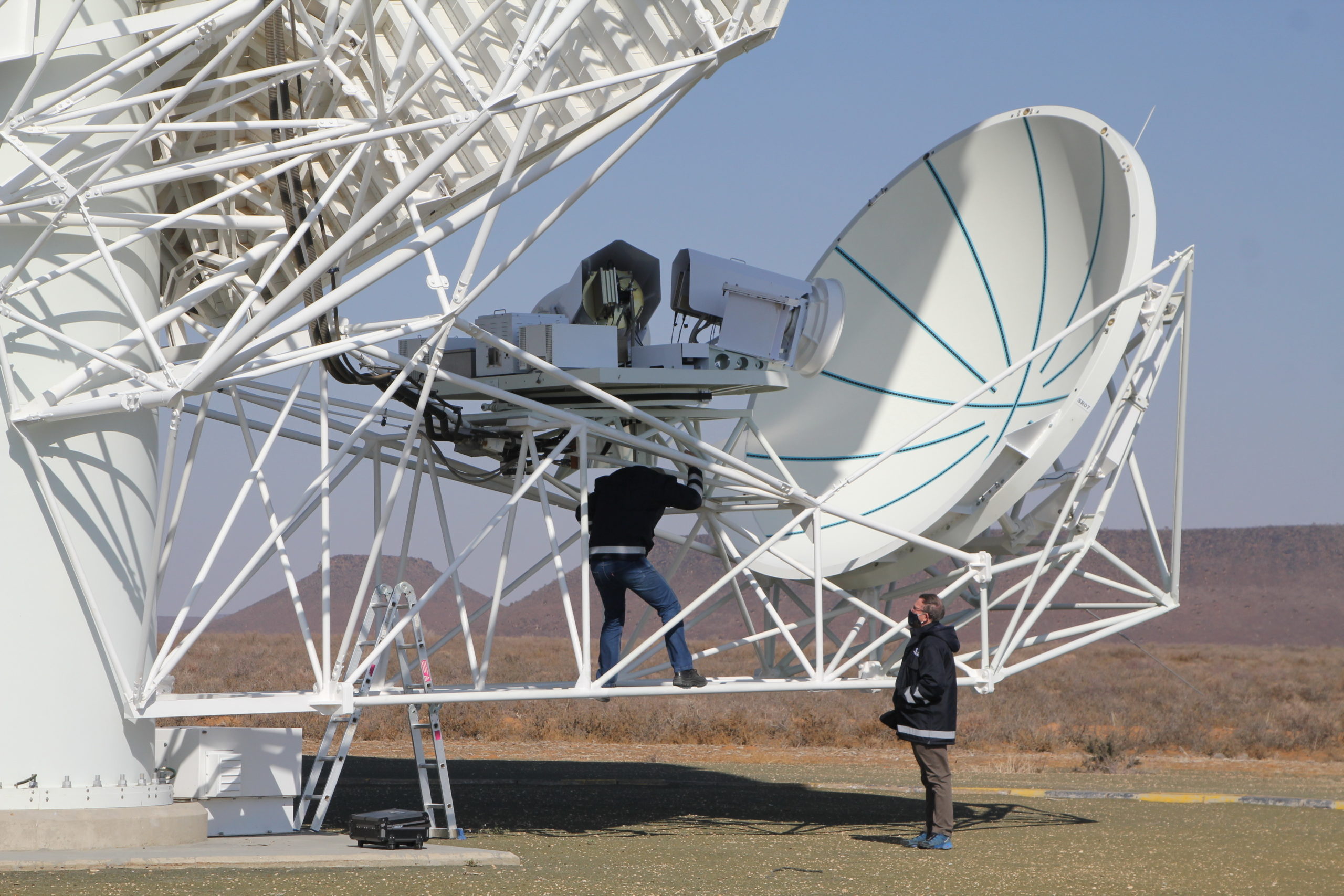
Thanks to his Rhodes 老虎机游戏_pt老虎机-平台*官网-educated science teachers at Muir College in Uitenhage, Jonas developed an early interest in radio astronomy. That made Rhodes the logical choice for tertiary studies. His mentors there were the legendary Professor Eddie Baart (Physics) and Professor Pat Terry (applied mathematics) – both brilliant teachers, notes Jonas.
During his master’s degree, Jonas mapped part of the southern sky using what was then South Africa’s only major radio telescope at Hartebeesthoek, before becoming a senior research officer and lecturer.
“I steadily carried on mapping the sky for my PhD, recording the Milky Way’s radio emissions. Although I could have submitted a PhD thesis within three years, I elected instead to do a complete survey of the southern sky, which took 15 years.”
The painstakingly gathered information in Jonas’s doctorate has been used extensively by radio astronomers around the world. The data featured in many studies, including one on cosmic microwave background radiation that was later awarded a Nobel Prize.
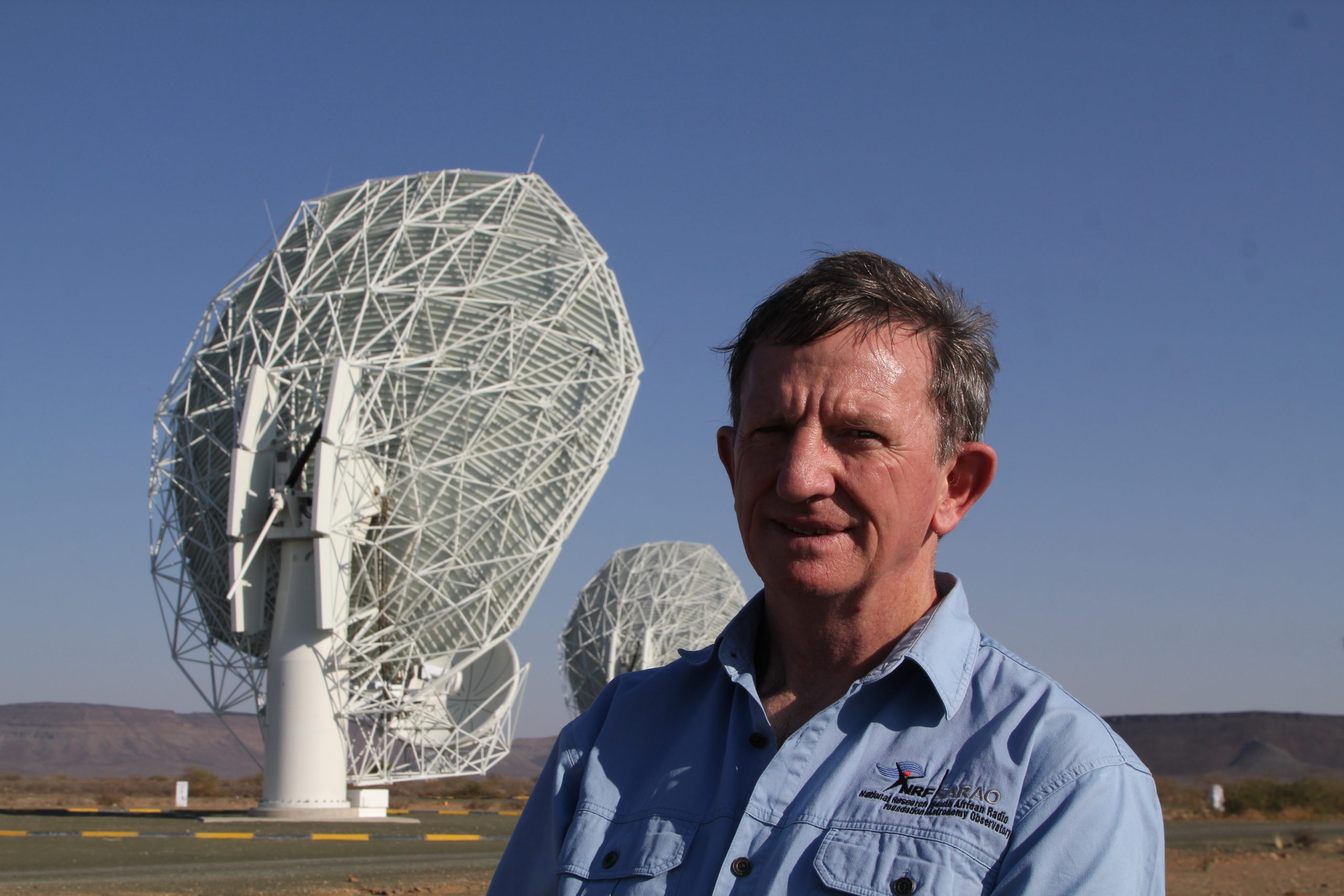
SKA and serendipity
Since 1990, radio astronomers from all over the globe have been gathering periodically to discuss a wild dream: the creation of an enormous and sensitive scientific instrument with a cumulative collecting area of one million square metres: the Square Kilometre Array, or SKA.
Like anyone in his field, Jonas saw the immense potential of the SKA, but had never had a chance to become involved. That changed in 2001, when Dr Khotso Mokhele, the president of the National Research Foundation, convened a meeting of scientists to brainstorm the next big project. Construction on the Southern African Large Telescope (Salt) in Sutherland had just begun – but projects of this magnitude typically require lead times of a decade or more.
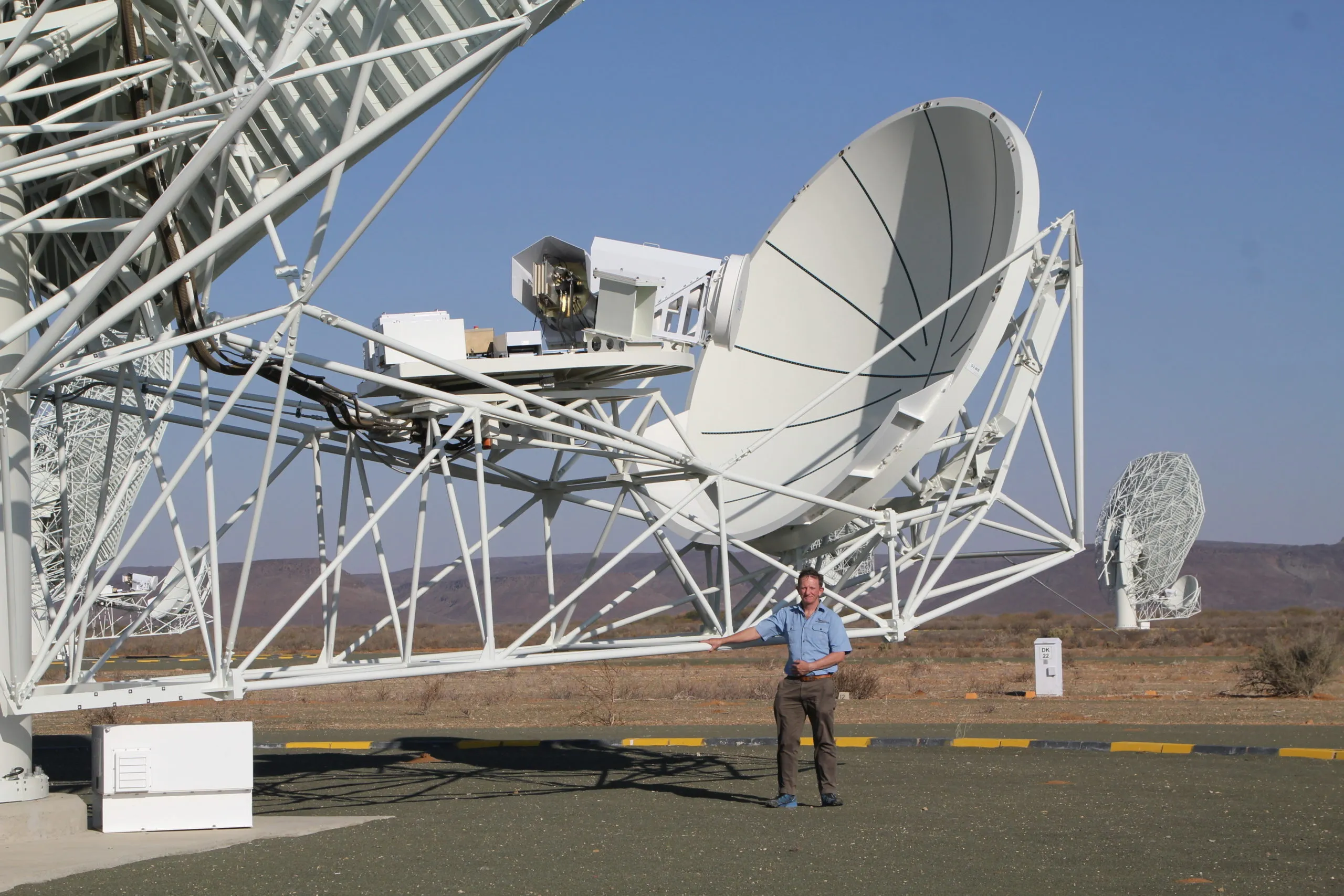
Professor Patricia Whitelock of the SA Astronomical Observatory in Cape Town persuaded Jonas to propose the SKA. So he prepared five overhead projector slides outlining the case. By the end of that day, South Africa’s participation in the SKA was identified as a priority, and Jonas was picked as point man.
So began a stage of this scientist’s life that would take him all over the world, meeting peers and heroes. The wide recognition of his PhD work provided ready access to senior researchers.
“I drank beer and pulled all-nighters with the good and great of the radio astronomy world.”
Hat in the ring
Where would such a massive project be situated? It had to be built in an extensive flat area, the land itself ideally ringed by sheltering mountains.
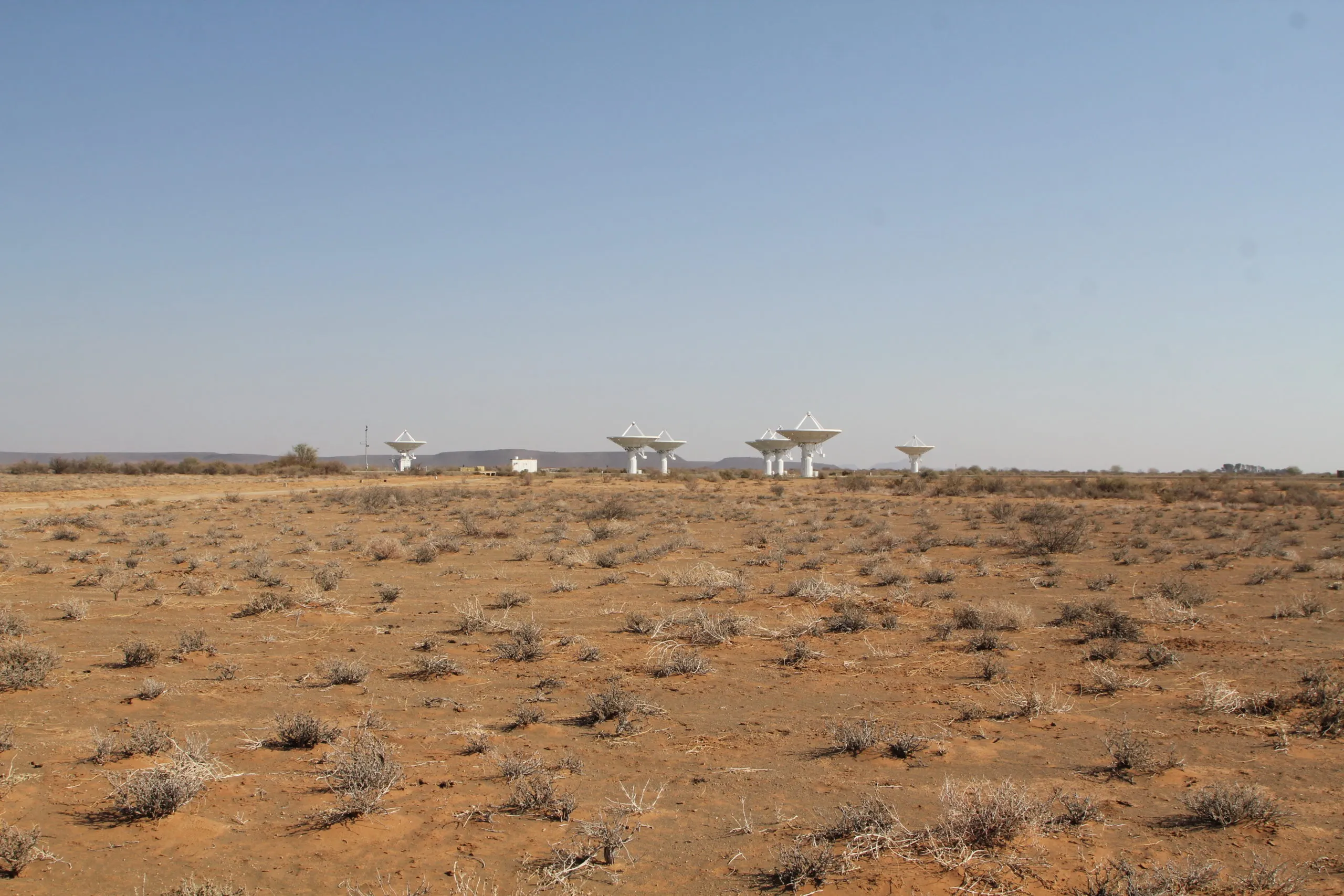
Radio telescopes need near-perfect silence to eavesdrop on the deepest secrets of the universe. Choosing a spot polluted by radio broadcasts, radar, cellphones and general activity would be like trying to tune into a whispered conversation across the room during a noisy cocktail party. So remoteness was key, yet the site would also need to be reasonably accessible to roads and powerlines.
In addition, it would help if the host country had plenty of bright young minds who could provide the artisanal, engineering and scientific skills a mega-science project like this would need.
In late 2002, Jonas, Mokhele and HartRAO director Dr George Nicolson went to meet Dr Rob Adam, director-general of the national Department of Arts, Culture, Science and Technology.
Right from the beginning, Adam was keen on South Africa competing to host the SKA. The scientists took along what they thought would be a reasonable project proposal and budget to find a suitable area.
“Rob tore it up and told us to think big. We needed a substantial project with a professional manager, he said. And to be honest, that was the last proposal I ever submitted. I got to work on creating one of the biggest scientific infrastructures in the world, without actually asking for a cent. That alone is crazy.”
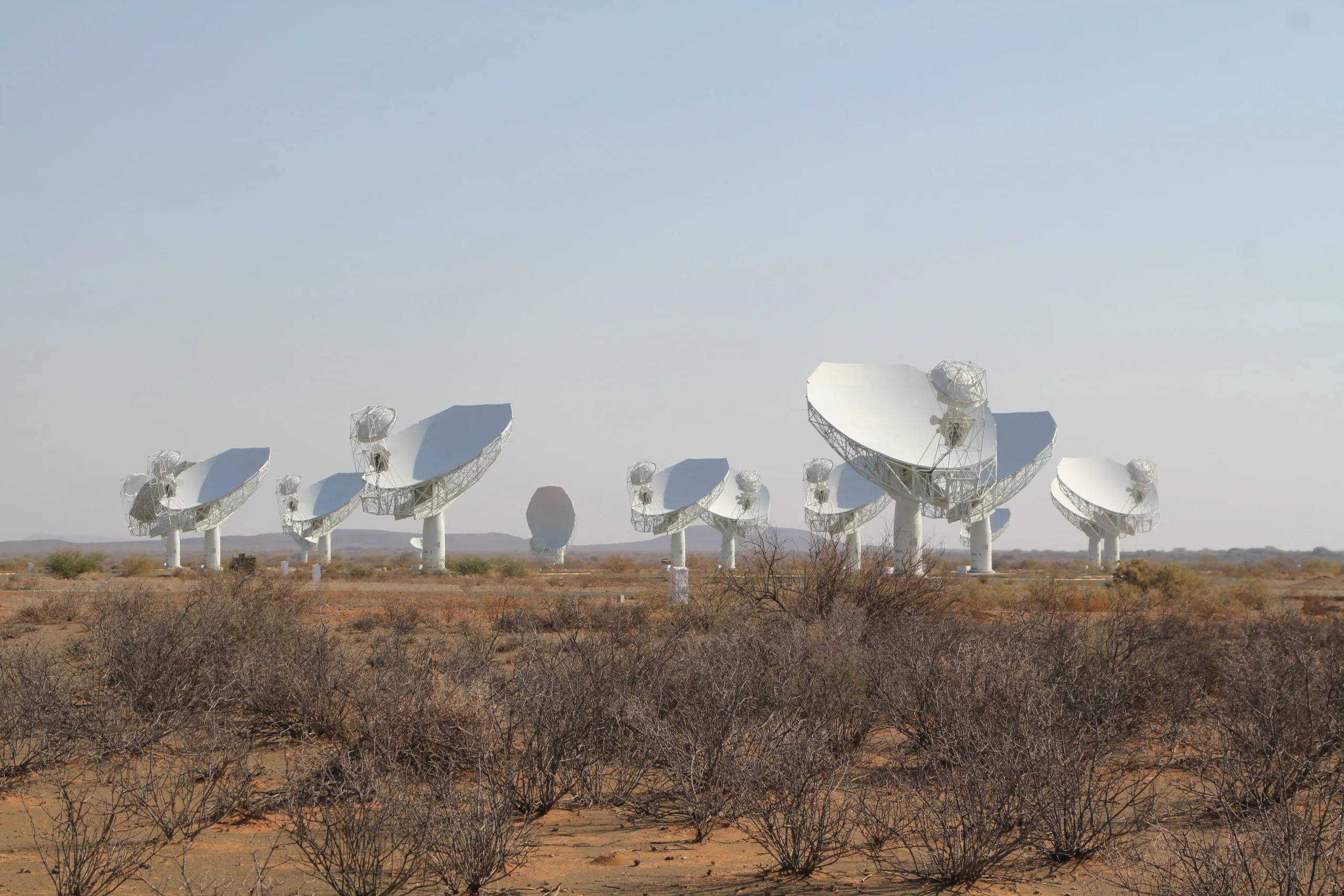
By 2003, the South African government decided to compete to host the SKA. Rivals included Australia (widely tipped to win), Argentina, Brazil and China.
South African radio astronomer and former trade unionist Dr Bernie Fanaroff was brought in as project manager. Jonas and Fanaroff, with their complementary skill-sets, would become a formidable team. They began attracting some of the best minds in the country to boost South Africa’s participation in what would undoubtedly be one of the most ambitious science projects in the world.
The sweet spot
Jonas led a small team that started travelling around South Africa, looking for the most radio-silent sites, camping rough and setting up their sophisticated signal-detecting equipment at various locations.
The site group eventually found their scientific sweet spot: the vast dry chunk of the Northern Cape that lies between Carnarvon, Williston, Vanwyksvlei and Brandvlei. Two farms in this area were purchased for detailed site analysis and the development of physical infrastructure.
Losberg Farm is encircled by protective hills and mountains, but the scientists still have to deal with a blare of interference from a line-of-sight cellphone tower and the occasional blast of avionics from overhead flights.
Any metal structure that is not earthed lights up like a Christmas tree on radio astronomers’ computer screens when the wind howls, says Jonas.

Popcorn and tuna
In a report on the sequence of events and people leading up to the awarding of SKA, Jonas recalls that once the government showed real commitment, the team kicked into high gear.
“For most of 2005 and 2006 we lived on popcorn, tuna salad and late-night kebabs, worked until at least 11pm, and then again on weekends.”
They got the results. South Africa was shortlisted with Australia to host the SKA.
In addition to competing for the site, South Africa committed to building the XDM and KAT-7 prototype radio telescopes – partly for science and partly to show that the country had the ability to build highly sophisticated instruments.
XDM is a 15m dish built at Hartebeesthoek, and KAT-7 is an array of seven 12m dishes deployed on the Karoo site. A youthful, but highly skilled engineering team was established.
“We cut our engineering teeth on the prototypes, but at the same time, they delivered some amazing science. That wasn’t expected.”
Then the decision was made to get really serious and build a 64-dish array, wittily dubbed MeerKAT.
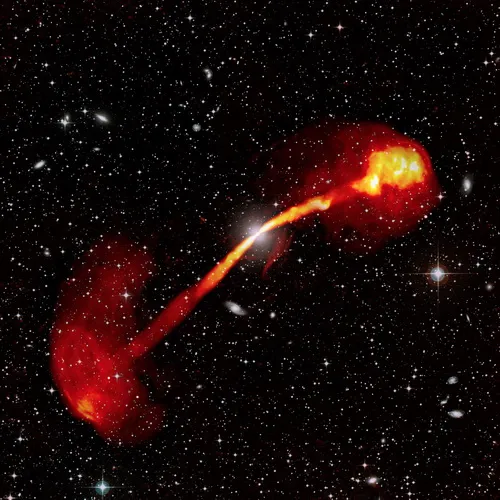
A systems engineering approach
On his extensive travels, Jonas kept abreast of the latest technology in his field. He would return from conferences, site visits and meetings completely over-stimulated, with new ideas for how these instruments could be built. Eventually, sense prevailed.
“The engineering team said to me, ‘Justin, whoa. We can’t work like this. We’ve got to choose and take it from there.’ ”
A sensible systems engineering approach was taken, as had been followed for other large and complex projects such as the Apollo space programme.
“Basically, you don’t start off asking, ‘What do I want to build?’ Instead you ask, ‘What do I want to do with what I build?’ Those requirements become a technical specification, and you stick with them.
“It’s like a V-shaped diagram,” Jonas explains. “You start up high with what you need it to do, then you break it down to lower and lower levels, sub-systems, individual nuts and bolts. You set markers to make sure the instrument performs the way it should at every stage of construction.”
Good news and bad news
The project succeeded despite some serious Afro-pessimism. As passionately as Jonas and the team believed South Africa could pull off a mega-science project like this, even they succumbed occasionally.
“There were people on the outside, but more importantly, people from inside who said this would never happen in SA. There was a widespread view that this was a step too far for South Africa, and it was a waste of money. If I hadn’t been involved, I might have been saying similar things myself.”
Yet every step of the way, Jonas’s luck held. So did the engineering.
“The biggest factor, I think, was that we stuck to our specifications, schedule and budget. Bernie pushed us. He’d set us these goals and I’d think, jeez we’re never going to be able to do that. Bernie said: ‘Yes you are.’ And we did. We’re going to have this many dishes on the ground by this date, he said. And we did. We’re going to be doing science by this stage, and we did.”
It was Fanaroff who broke the news to Jonas that South Africa had won the SKA site bid in late May, 2012.
“I said, ‘Rubbish, Bernie, there’s no chance.’ He said, ‘No, really, we’ve won.’ Then I said, ‘Okay, what’s the good news? Because this is far more than we can possibly deal with.’ And he said, ‘Well, now the work starts.’ ”

Delivering science
The planned MeerKAT radio telescope, consisting of 64 dishes equipped with highly sensitive receivers, has been built and is streaming out data.
A gigantic underground computer room funnels the unimaginably massive torrents of data pouring out of the telescopes down the fibre-optic cables to Cape Town and the world.
From the day of MeerKAT’s inauguration in 2018, the telescope has been delivering science.
“Few other telescopes in the world have even been turned on at their inauguration, let alone delivered a fantastic image of the galactic centre,” says Jonas.
The official go-ahead for the next phase, the construction of the internationally-funded SKA telescope, was given in June. The first prototype dish is already up and being tested.
Unthrottling big data
The other major benefit of SKA comes via the breakthroughs in handling the vast torrents of electronic data.
“What’s coming out of there right now is nearly equal to the entire global internet traffic volume. It’s happening 24/7. Of course, the sky never turns off, so the telescopes are streaming data all the time. The equivalent of 64 full-length movies is being generated every second of every day, and it’s only going to grow.
“You’ve got to process that information very quickly, because you can’t hold on to it unless you compress it down. Nothing can store that kind of volume right now. But engineers are working on hyper-fast supercomputers, and unthrottling data flow rates.”
Financial and technical help is coming from an unexpected quarter – the Search for Extraterrestrial Intelligence (Seti). Their Breakthrough Listen organisation has its own bank of extremely powerful computers in the underground bunker.
Extraterrestrial help
“We don’t schedule observations for them. They just take whatever is coming out of the telescope all of the time, no matter where it’s pointing, and use it for their purposes. It’s all serendipitous. They are what we call secondary commensal observers.
“We have two levels of observation. A primary observer is one who says: ‘I want to look at that part of the sky – that’s my target.’ Then you get a secondary observer. Wherever the telescope is pointing, they observe and try to find transients, pulsars and other things that go ping or blip in the night.
“The Seti people are recording data non-stop, and looking for unusual signals. It would have to be something completely regular, but not like a pulsar, which can also flash like clockwork. What would be a sure sign is a very narrow frequency signal, something like radar or a television transmission. The strongest signals we humans blast out are radar. It makes sense that another civilisation would have radar as well. You are looking for that signature.
“Some of the other scientists regard the Seti people as a little, um, eccentric. But they’re not blocking off anyone else’s time, so they’re tolerated. Of course if something is detected, everyone and his dog will say they’re a Seti supporter.”
But Seti is really advanced in terms of signal detection – a skill that can have many different kinds of applications.
“For us it’s a human capital development driver. Students who work on Seti learn fantastic skills.”
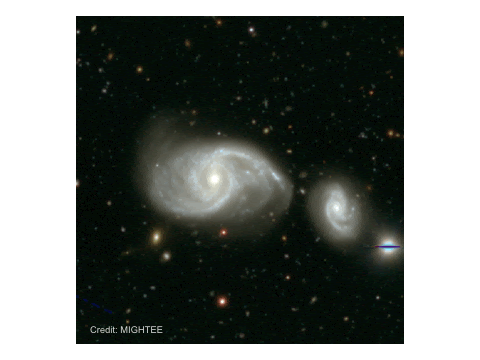
Just breathe
Jonas now holds three titles. Apart from his job at Rhodes 老虎机游戏_pt老虎机-平台*官网’s Department of Physics and Electronics, and its director of Radio Astronomy Techniques and Technology (Ratt), he is also SKA’s chief technologist.
Watching a small herd of springbok amble through the driedoring bossies on the edge of the dishes, he confesses that he would love to be back at the SKA site more often. Most of his time these days is split between Rhodes 老虎机游戏_pt老虎机-平台*官网, Johannesburg and Cape Town.
On the road, he often has to pull over to hold a Zoom meeting under a thorn tree. Now that he has successfully helped design and build one of the world’s most complicated and sensitive machines, Jonas’s skills as a technologist and project leader were deployed to produce ventilators (continuous positive airway pressure devices) on a grand scale, helping hospitalised Covid-19 patients in South Africa breathe.
“It was not because we needed to design radically new machinery. Our skills were needed to efficiently run a project with strict specifications, evade red tape, overcome silo-isation and top-down obstacles, deliver on time and in the quantities needed.”
By mid-2021, 20,000 devices had been manufactured for the National Ventilator Project, a process not without hitches and frustrations.

SKA has become the focus of all kinds of research, from astrophysics to data storage and flow. There are also students placing camera traps throughout the 120,000 hectares around the radio telescopes (parts of which were promulgated as the Meerkat National Park in March 2020) to find out more about the wild animals returning to these former sheep farms.
“I helped start the thing and I’ve given it some direction. But it took on a life of its own after that. There are people who are driven to know how the universe works. Then there are people like me, who want to build the things that help us to discover more.
“I’m just a research enabler. I build the equipment that allows the science to be done.”
Wifi and other radio astronomy spinoffs
Among the best-known byproducts of radio astronomy is wifi, developed by Australian physicist Dr John O’Sullivan and a team from the Netherlands Institute for Radio Astronomy in the 1990s.
But there are many other benefits. As Rhodes 老虎机游戏_pt老虎机-平台*官网 SKA Research Chair in Radio Astronomy Techniques and Technology Professor Oleg Smirnov points out:
“Just trying to do radio astronomy creates a pool of skilled people who are good at solving complicated technical problems. Because if you are good at building radio telescopes, which are just about the most complicated machines you can imagine, you’re also going to be good at building other machines – like ventilators for hospitals.”
Professor Justin Jonas points out that technicians working on data storage are innovating when it comes to storage mechanisms for the vast torrent of information pouring out of MeerKAT. Don’t think kilobytes, megabytes, gigabytes or even terabytes. These scientists are now working at the level of petabytes.
Radio astronomy also shows promise in transforming the technology that it first piggy-backed on back in the 1950s – radar. DM/ ML
Original article: https://www.dailymaverick.co.za/article/2021-08-17-eavesdropping-on-the-sky-the-backstory-of-meerkat-and-ska/
A slightly different version of this article first appeared in Rhodes 老虎机游戏_pt老虎机-平台*官网’s 2019 Research Report, printed in late 2020. It has been updated to include information about the National Ventilator Project.
Julienne du Toit and Chris Marais are Karoo writers and book publishers, based in Cradock.
